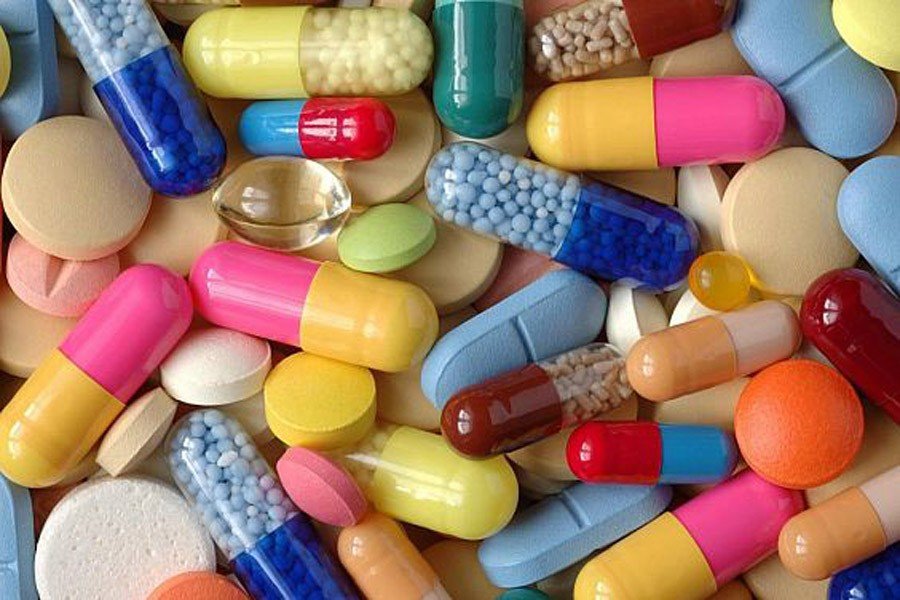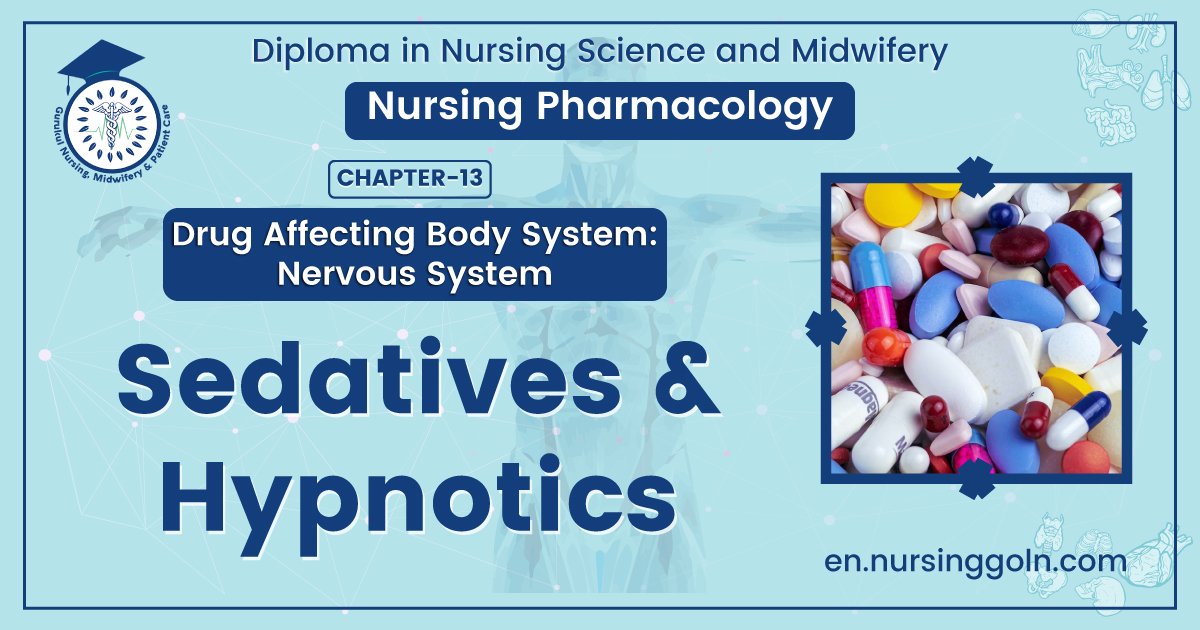Concept About Sedatives & Hypnotics – This book covers the entire syllabus of “Pharmacology” prescribed by BNMC- for diploma in nursing science & midwifery students. We tried to accommodate the latest information and topics. This book is an examination setup according to the teachers’ lectures and examination questions.
At the end of the book, previous questions are given. We hope in touch with the book students’ knowledge will be upgraded and flourish. The unique way of presentation may make your reading of the book a pleasurable experience.
Concept About Sedatives & Hypnotics
Tranquillizer
A tranquilizer refers to a drug which is designed for the treatment of anxiety, fear, tension, agitation, and disturbances of the mind, specifically to reduce states of anxiety and tension.
Sedative and hypnotics both are Minor Tranquillizer

Sedative
Drugs that reduce anxiety, excitement and exert a calming effect without affecting the mental functions.
Hypnotics
Drugs that produce hypnosis (a state: resembling normal sleep)
Hypnosis
Hypnosis is a subconscious condition in which the objective manifestations of the mind or more or less inactive, accompanied by abnormal sensibility.
Progressive Grade of CNS Depression
Sedition
↓
Hypnosis
↓
Narcosis
↓
General anesthesia
↓
Coma
↓
Death
Progressive Grade of CNS Excitation
Mild hyper-excitability
↓
Severe hyper-excitability
↓
Mild convulsion
↓
Severe convulsion
A. Barbiturate hypnotics
1. Long acting barbiturates (8-12 hours)
- Barbitone.
- Phenobarbitone
- Mephobarbitone
- Apobarbitone
2. Intermediate acting barbiturate (6-8 hours)
- Amilo-barbitone
- Allo-barbitone
- Buto-barbitone
- Vin-barbitone
2. Short acting barbiturate (3-6 hours)
- Pento barbitone
- Quinal-barbitone
- Seco-barbitone
2. Ultra-short acting (30min-1 hours)
- Thiopental Na+
- Hexobarbitone Na+
B. Non-barbiturate hypnotics

1. Organic group:
a. Benzodiazepines (best hypnotic)
- Nitrazepam (most potent)
- Diazeparnt
- Oxazepam
- Temazepam
b. Aldehyde derivatives
- Paraldehyde
c. Alcohol:
- Ethyl alcohol
- Chloral hydrate
d. Carbamet derivatives:
- Ethinmate
- Urethan
e. Piperidine derivatives:
- Gluthemideta
- Thalidomide
f. Miscellaneous:
- Antihistamine
- Scopolamine
2. In-organic group:
- Na bromide
- K+ bromide
- NH+ bromide
(Chloral hydrate used for children as hypnotics)

Clinical use of Sedatives & Hypnotics:
1. To relief anxiety and tension.
2. For hypnosis.
3. Sedation & amnesia before medical & surgical procedure ri: In the treatment of epilepsy and seizure.
4. Pre-medication prior to anaesthesia.
5. For muscle relaxation.
6. A Diagnostic aids or for the treatment in psychiatry
7. I/v as a component of balanced anaesthesia.
Read more:
